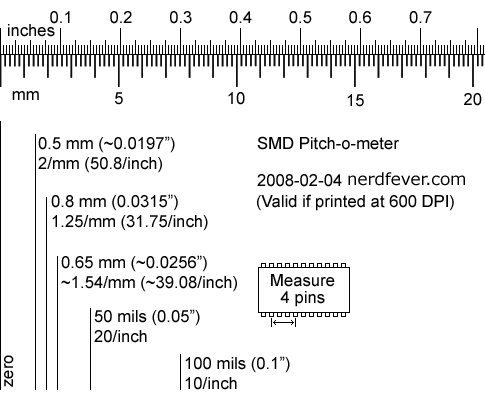If you’re working with SMD stuff, it’s really helpful to have a 10 to 20 power stereo microscope (stereo, not “binocular” – it’s not the same thing) to see what you’re doing.
(The most common type is called a “dissection microscope” – try eBay; they can be had for < US$100.)
Here's something I made to help measure and identify SMD parts under the microscope - the SMD Pitch-o-meter:
[Update: See the new, improved version here.]

Print it out at 600 DPI (most any Canon or HP printer – I don’t know what will happen with an Epson printer – they do 720 DPI. It might scale it OK, might not.).
It has a scale of inches (to 1/250″) and millimeters (to 0.2mm) for measuring parts.
To measure SMD lead pitch (usually called parameter ‘e’ on datasheets) measure 4 (four) pins on the part from the line marked “zero”. Then read up for the pitch.